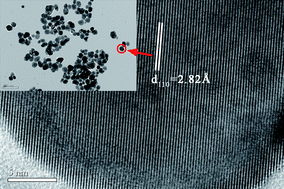Rapid synthesis of quasi-spherical (Ba,Sr)TiO3 nanocrystalsvia a microwave-activated glycothermal approach
Abstract
Barium strontium titanate (BST)

* Corresponding authors
a
State Key Laboratory of Materials-oriented Chemical Engineering, School of Materials Science and Engineering, Nanjing University of Technology, 5# New model Road, Nanjing, P R China
E-mail:
zengyanwei@tom.com
Fax: +86 25 83587254
Tel: +86 25 83587254
Barium strontium titanate (BST)

 Please wait while we load your content...
Something went wrong. Try again?
Please wait while we load your content...
Something went wrong. Try again?
Y. Xiaowei, Z. Yanwei, M. Leiqing and H. Longxiang, J. Mater. Chem., 2011, 21, 3133 DOI: 10.1039/C0JM02689A
To request permission to reproduce material from this article, please go to the Copyright Clearance Center request page.
If you are an author contributing to an RSC publication, you do not need to request permission provided correct acknowledgement is given.
If you are the author of this article, you do not need to request permission to reproduce figures and diagrams provided correct acknowledgement is given. If you want to reproduce the whole article in a third-party publication (excluding your thesis/dissertation for which permission is not required) please go to the Copyright Clearance Center request page.
Read more about how to correctly acknowledge RSC content.
 Fetching data from CrossRef.
Fetching data from CrossRef.
This may take some time to load.
Loading related content
